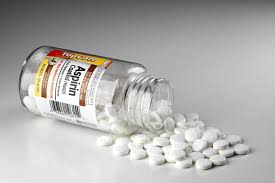- Home
- Editorial
- News
- Practice Guidelines
- Anesthesiology Guidelines
- Cancer Guidelines
- Cardiac Sciences Guidelines
- Critical Care Guidelines
- Dentistry Guidelines
- Dermatology Guidelines
- Diabetes and Endo Guidelines
- Diagnostics Guidelines
- ENT Guidelines
- Featured Practice Guidelines
- Gastroenterology Guidelines
- Geriatrics Guidelines
- Medicine Guidelines
- Nephrology Guidelines
- Neurosciences Guidelines
- Obs and Gynae Guidelines
- Ophthalmology Guidelines
- Orthopaedics Guidelines
- Paediatrics Guidelines
- Psychiatry Guidelines
- Pulmonology Guidelines
- Radiology Guidelines
- Surgery Guidelines
- Urology Guidelines
No excess risk of Intracranial Bleeding using low-dose Aspirin

In primary care populations, the extent to which low-dose aspirin heightens risk for intracranial bleeding is unclear. Dr. Cea Soriano L et al. conducted a population-based observational study to quantify the risk of intracranial bleeds (ICBs) associated with new use of prophylactic low-dose aspirin using a population-based primary care database in the United Kingdom. The researchers have found that there is no excess risk of increased intracranial bleeding using low dose Aspirin.The study has been published in Journal Neurology.
A cohort of new users of low-dose aspirin (75–300 mg; n = 199,079) aged 40–84 years and a 1:1 matched cohort of nonusers of low-dose aspirin at baseline were followed (maximum 14 years, median 5.4 years) to identify incident cases of ICB, with validation by manual review of patient records or linkage to hospitalization data. Using 10,000 frequency-matched controls, adjusted rate ratios (RRs) with 95% confidence intervals (CIs) were calculated for current low-dose aspirin use (0–7 days before the index date [ICB date for cases, the random date for controls]); reference group was never used. In this study, researchers estimated this risk in a large established U.K. database that is demographically representative of the country's population. About 200,000 new users (age range, 40−80) of low-dose aspirin were matched by age, sex, and comorbidities with about 200,000 nonusers, and a nested case-control study was performed. Contamination by unrecorded over-the-counter aspirin use is minimal in this database, according to the authors' previous research.
It was found that in 1611 cases of intracranial bleeding occurred (46% intracerebral hemorrhage, 30% subdural hematoma, and 24% subarachnoid hemorrhage) during the median follow-up of 5.4 years, In analyses adjusted for various demographic and clinical factors, current use of low-dose aspirin was not associated with excess risk for intracranial bleeding overall (rate ratio, 0.98) or for intracerebral hemorrhage (RR, 0.98), subdural hematoma (RR, 1.23; 95% confidence interval, 0.95−1.59), or subarachnoid hemorrhage (RR, 0.77; 95% CI, 0.58−1.01).
The researchers concluded that -Low-dose aspirin is not associated with an increased risk of any type of ICB and is associated with a significantly decreased risk of SAH when used for ≥1 year.
For further reference log on to :
http://n.neurology.org/content/89/22/2280

Disclaimer: This site is primarily intended for healthcare professionals. Any content/information on this website does not replace the advice of medical and/or health professionals and should not be construed as medical/diagnostic advice/endorsement or prescription. Use of this site is subject to our terms of use, privacy policy, advertisement policy. © 2020 Minerva Medical Treatment Pvt Ltd